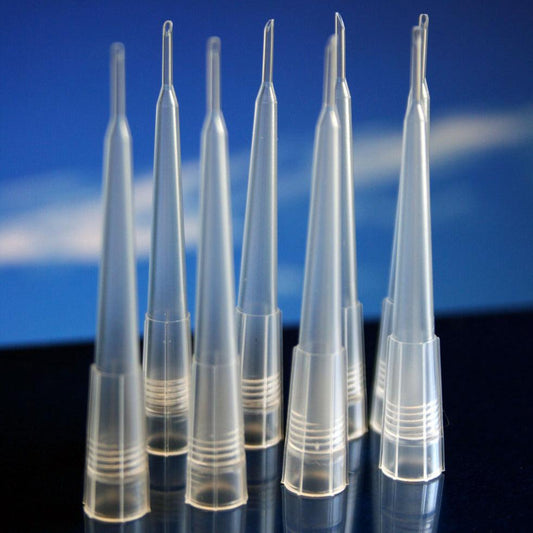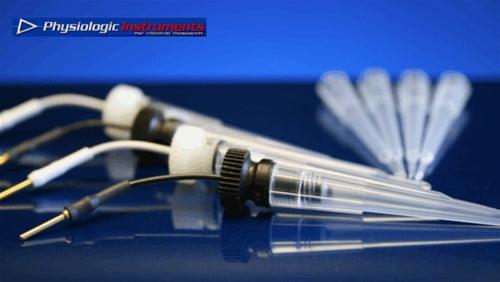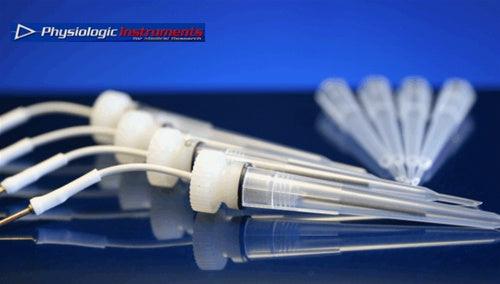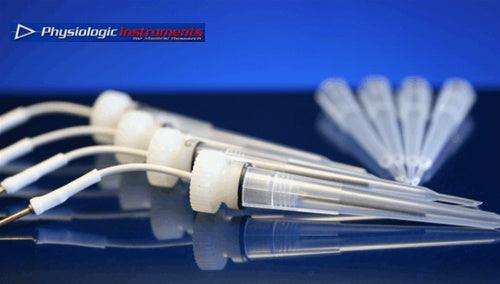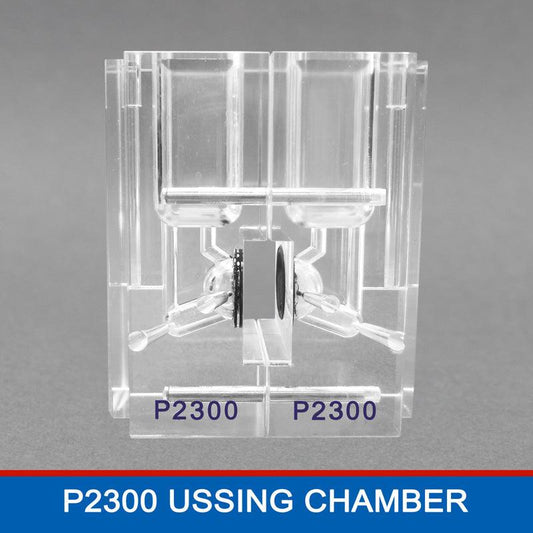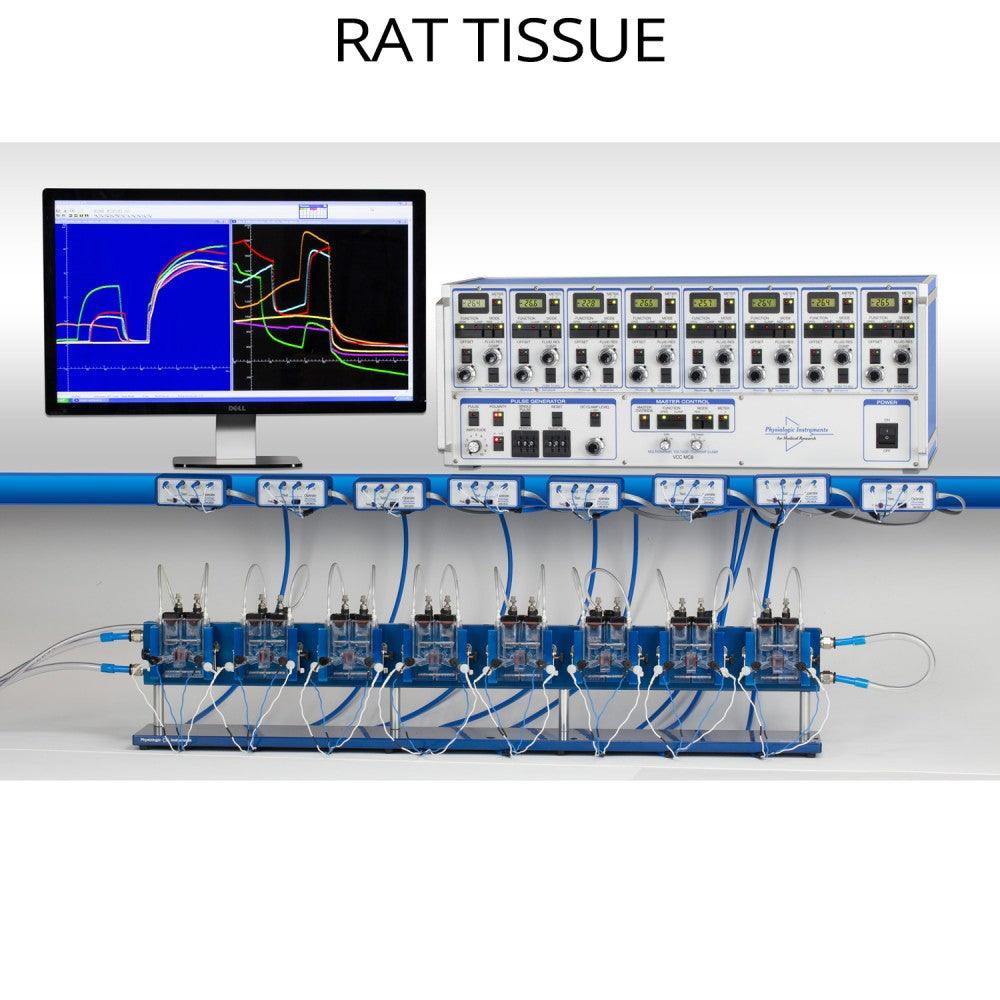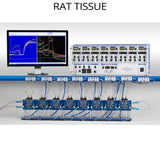P2252 Rat Tissue EasyMount Ussing Chamber System
The P2250 EasyMount Ussing Chamber System is a specialized tool designed for efficiently mounting and studying rat intestinal tissues with precision and ease. Featuring a 5 x 22 mm oblong aperture for a consistent 1.0 cm² tissue area, it simplifies the tissue preparation process using P2252 sliders with curved pins for secure and accurate placement. With a versatile half-chamber volume range of 2.0-7.0 ml (optimal at 5 ml per half), it ensures adaptability to various experimental setups. Ordering additional P2252 sliders is recommended to streamline workflow. Ideal for researchers, the P2250 system delivers reliability and convenience for advanced tissue studies.
- Regular price
- $0.00
- Regular price
-
- Sale price
- $0.00
- Unit price
- per
Product Description
P2250 EasyMount Ussing Chamber System for Rat Tissue
The P2250 EasyMount Ussing Chamber System for rat tissue is specifically designed for mounting intestinal tissues using an 5 x 22 mm oblong aperture to yield 1.0 cm^2 tissue area. Tissues are mounted by pressing the tissue over short, curved pins lining the aperture of the slider (slider identification: P2252).
Our P2250 Ussing Chamber has a usable half chamber volume range is 2.0 - 7.0 ml (typical working volume 5 ml per chamber half). The P2252 holders for mounting tissue samples must be ordered separately. We recommend ordering 1 extra P2252 slider to streamline the mounting process.
The EM8-R Rat Tissue Ussing System Includes:
| Quantity | Voltage/Current Clamp Parts | Quantity | Software | |
| 1 | VCC MC8-8S voltage/current clamp with optiGain | 1 | Acquire & Analyze Data Acquisition package with DI-720P | |
| 8 | DM-MC6 Input Modules with Dummy Membrane | |||
| Quantity | Chamber Parts | Quantity | Accessories | |
| 1 | EM-RSYS-8 Chamber System | 16 | FN15 Filling Needles | |
| 8 | P2250 Chambers | 1 | GWB1 Gas Washing Bottle (1 L) | |
| 8 | P2020-S Electrode sets | 1 | TK-7 Tubing and Setup Kit | |
| 8 | P2024-40 Electrode Lead Sets | |||
| 8 | P2060 Air Valve Sets | |||
| 8 | P2250-Caps (chamber caps) |

The Rat Tissue Ussing Chamber Stand is common to all our chamber systems. The stand consists of an anodized aluminum heat block which holds spring-loaded "cradles" to hold the acrylic Ussing chambers in place and tight against the heat block. CAM levers on each cradle provide a mechanism to remove the pressure on the chambers when tissues are being mounted. Temperature is maintained in the chamber by water pumped from a regulated water bath through the heat block. Because each chamber is individually mounted and pressed against the heat block, temperature in each chamber is the same (unlike competing systems). Air is is used to both oxygenate the tissue and provide stirring in the chamber.
Adjustment of airflow is by a needle valve mounted on the chamber stand directly behind each tissue half. Caps placed on the top of each chamber prevent contamination by droplets ejected from the chamber when air bubbles break the surface. Voltage-sensing and current-passing electrodes mounted into electrolyte gel-filled bridges are inserted into special ports in the front face of each chamber half with the voltage-sensing electrode being positioned closest to the tissue. A voltage may be generated across the epithelium as a consequence of ion selective channels in the membranes and active transport by the tissue. This voltage is sensed by the black Ag/AgCl electrodes and measured by the voltage clamp instrument. Current may be passed by the clamp instrument across the epithelium via the white electrodes. When this current is sufficient to exactly cancel the voltage generated by the epithelium, the epithelium is “short-circuited” and the current necessary to do this is the short-circuit current (Isc). When the solutions in the chamber compartments are essentially the same so there are no ion gradients, the Isc is a measure of the net active transport of ions across the epithelium.
Electrodes are connected by cables (P2024-40) to the input module (DM-MC6) which, in turn, connects to a voltage clamp module (MC-601) in the VCC MC8-8S instrument. The optiGain feature supplies switches for setting the current gain and fluid-resistance compensation range for all clamp modules from the front panel of the instrument. For the P2250 chamber with P2252 slider the optimal setting is Gain-10 and FRC-10.
Once tissues are mounted in the chamber the Master Control section can be used to synchronously set the Function, Mode and Meter switches on all modules. When the Mode switch is set to REM (remote) the Acquire & Analyze Data Acquisition can be used to record tissue bioelectrics. ACQUIRE and ANALYZE (A&A III) runs in the Windows® environment to measure current, voltage, conductance and resistance from 1-32 tissues simultaneously.


